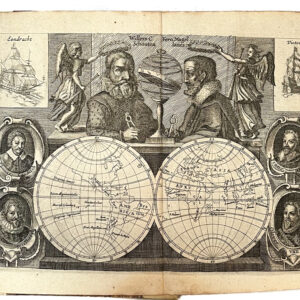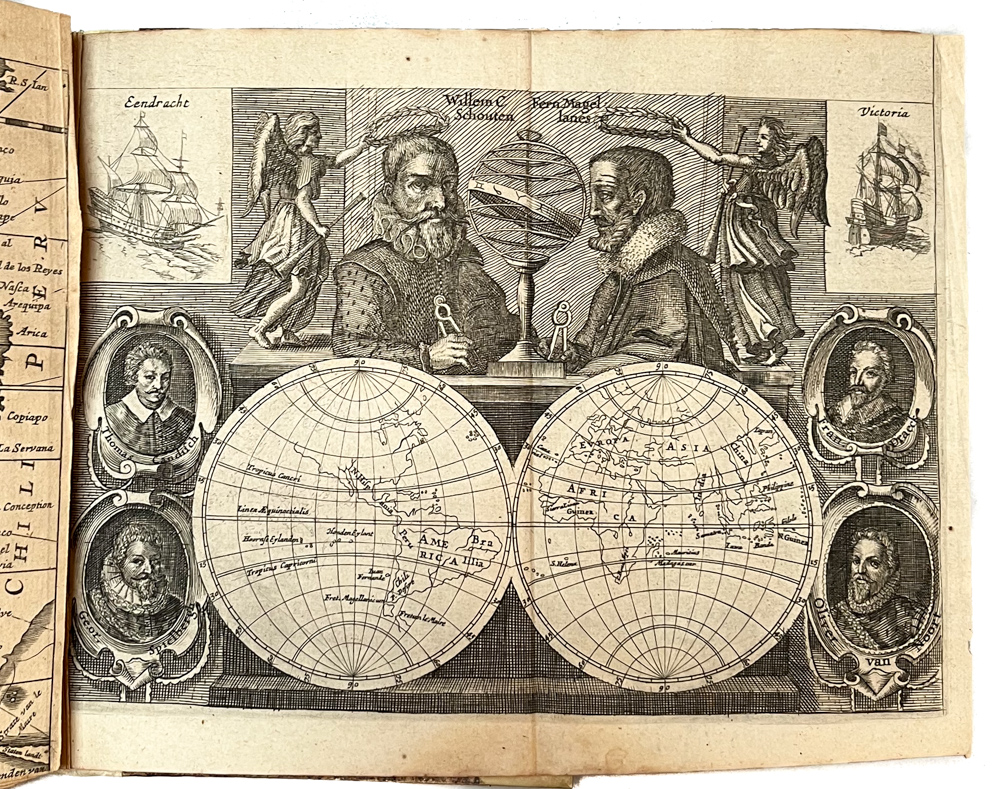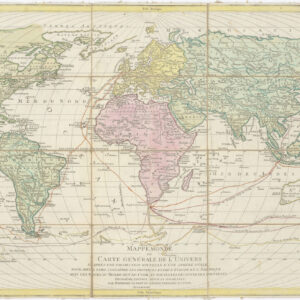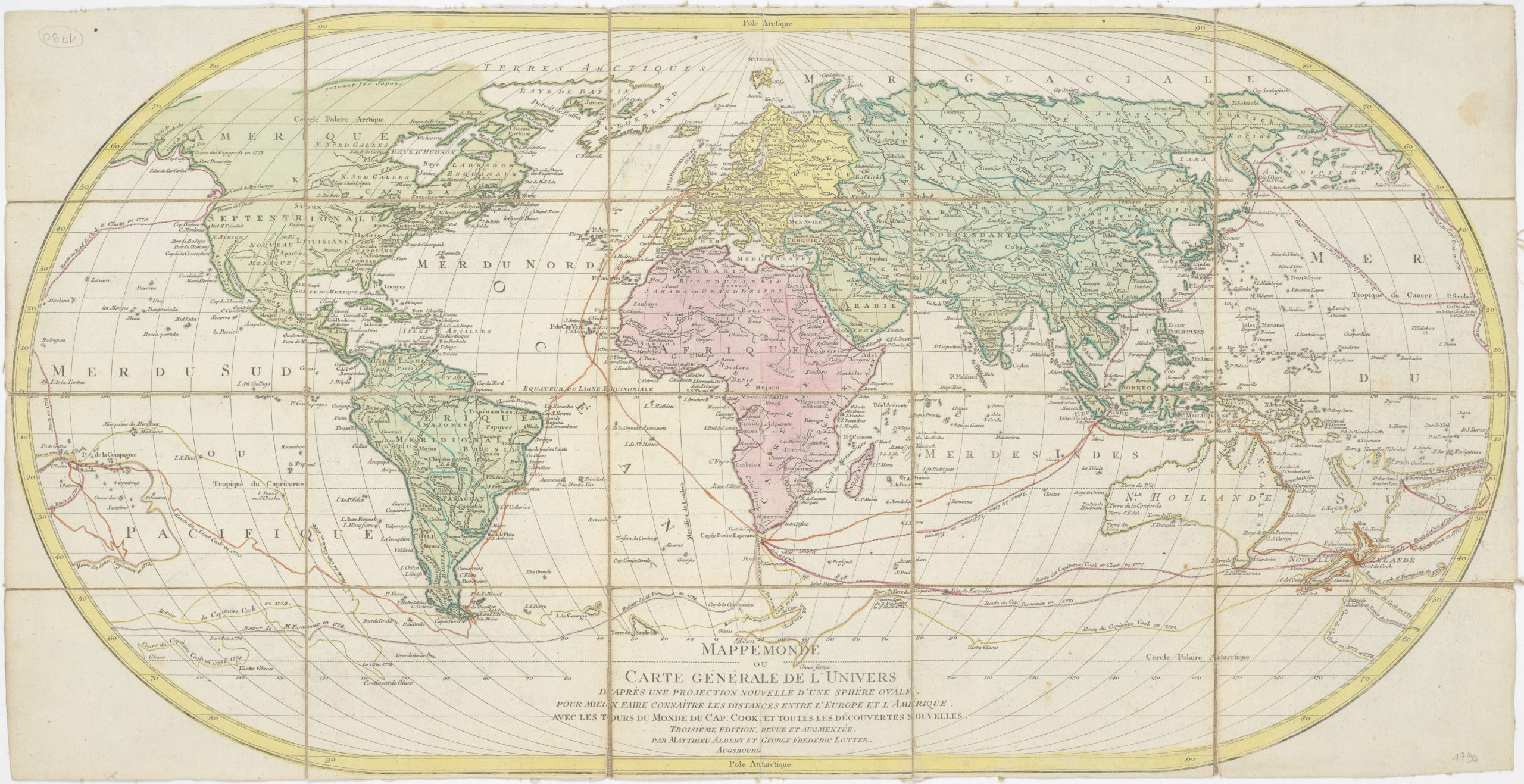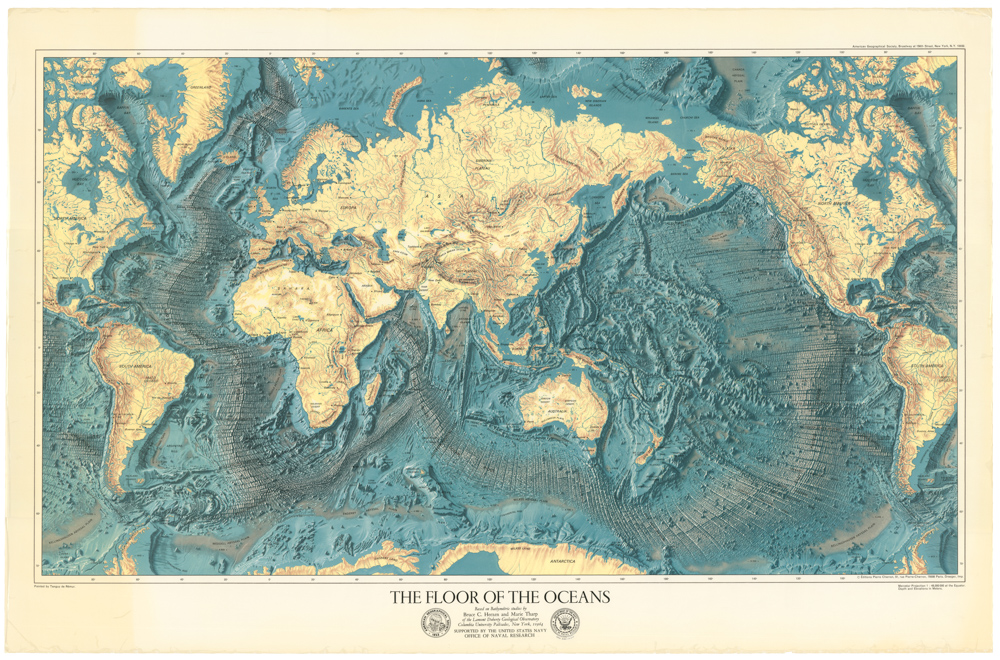Henri Chatelain’s magnificent map of the Western Hemisphere in superb color and condition.
Carte Très Curieuse de la Mer du Sud, Contenant des Remarques Nouvelles et Tres Utiles non Seulement sur les Ports et Iles de Cette Mer.
Out of stock
Description
Listen to Michael introduce this map:
One of the most embellished and decorative maps of the New World to have been produced in the 18th century. A vivacious tribute to the Age of Exploration and Discovery, Chatelain’s cartographic tour-de-force merges mapmaking and graphic artistry to create an inspired masterpiece that has echoed through the ages.
This beautiful and well-preserved copy of Chatelain’s map of the Western Hemisphere is perhaps the most astonishing chart of the New World to have been produced in the first half of the 18th century. Published in Amsterdam in 1719, the map was lavishly decorated and embellished in the style and tradition of 17th-century Dutch cartography but also supersedes this tradition in many ways.
In sum, Henri Chatelain’s magnificent chart of the Western Hemisphere constitutes a decisive step executed at a crucial stage in cartographic history, with humanity on the cusp of reaching a new and fuller geographical understanding of our world. Chatelain’s chart embodies this long journey and sets the stage for future accomplishments. It has been executed with the highest cartographic and artistic aspirations in mind and is, in the words of two renowned map scholars:
Historical Context
- Publication: Published in Amsterdam, 1719.
- Style: Lavishly decorated in the tradition of 17th-century Dutch cartography.
- Impact: “One of the most elaborately engraved maps of the Western Hemisphere ever produced.” (Schwartz & Ehrenberg, The Mapping of America, p.142)
Key Features
- Dimensions: Four joined sheets, 56 by 33 inches (142.5 x 83 cm).
- Decoration: Hand-colored, filled with geographic information, pictorial narratives, and evocative imagery.
- Coverage: Extends from eastern Asia to western Europe, focusing on the American landmasses and the Pacific Ocean.
Cartographic Details
- Geographical Understanding: Conceptualized during a transitional period in geographic knowledge.
- Exploration Routes: Includes exploration and trade routes, labeled with associated expeditions.
- Oceanic Emphasis: Oceans emphasized with caravels and other ships, text delineating ocean characteristics.
Notable Inclusions
- Explorers: Medallion portraits of explorers like Columbus, Vespucci, Drake, Magellan, and others.
- Annotations: Includes text describing explorers’ accomplishments and geographical features.
Mythical and Misrepresented Regions
- Anian and Yesso: Depicts the mythical Strait of Anian and the land of Jesso based on outdated concepts.
- Island of California: Continues the myth of California as an island, though notes modern beliefs of it being a peninsula.
Southeast Asia and Oceania
- New Guinea and Australia: Includes parts of the still largely unexplored New Holland (Australia).
- Dutch Influence: Reflects Dutch cartographic traditions and their territorial claims.
Artistic and Pictorial Elements
- Vignettes: Narrative scenes of colonial life, economies, and significant locations.
- Inset Maps: Depicts important locations like the Strait of Gibraltar, Cape of Good Hope, Rio de Janeiro, Havana, and more.
- Flora and Fauna: Illustrations of New World plants and animals, including cocoa, pineapple, tobacco, armadillos, and penguins.
Publication Information
- Atlas Historique: Part of a larger compendium published between 1705 and 1720.
- Compilation: Created by the Chatelain family; text primarily written by Nicolas Gueudeville.
Significance and Legacy
- Celebration of Discovery: Highlights the achievements of the Age of Discovery and its impact on humanity.
- Artistic Masterpiece: Combines massive textual information with cartographic detail, showcasing Chatelain’s skill and imagination.
Cartographer(s):
Henri Abraham Chatelain (1684 – 1743) was a Protestant pastor (Huguenot) from Paris who, due to his faith, was forced to flee his native France. He settled first in London and later in Holland, where he worked from both The Hague and Amsterdam during the early 18th century. While his primary calling was as a preacher, his Atlas Historique became a huge success, partly due to the vivacious decoration and abundance of information on his charts.
Condition Description
The map is in excellent condition with a lovely patina and beautiful hand color. Backed on linen for strength and long-term preservation.
References
Brown, Stephen R. 2017 Island of the Blue Foxes. Disaster and Triumph on the World’s Greatest Scientific Expedition. Da Capo Press: New York.
Schwartz, Seymour I. and Ralph E. Ehrenberg. 1980 The mapping of America. H.N. Abrams: New York.
